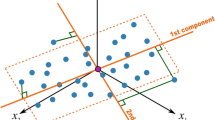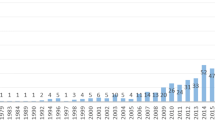Abstract
Lead users are the group of most valuable users in product innovation and new product development for a certain firm. Based on web mining methods on user innovation communities, this paper presents quantitative methodology to evaluate the contributions and values of online community users to identify lead users. Firstly, we analyze user behaviors and calculate the user interest index (UII) of posts, keywords and innovation fields to measure the popularity of innovations based on other users' focus. Secondly, the model of User Innovation Knowledge supernetwork (UIKSN) is proposed, in which UIIs and user contributions are considered as two types of node weights for integrating behavior data and content data. And then, rules and methods are suggested based on the UIKSN model for identifying lead users to meet various requirements including contributions and UIIs in posts, keywords, hot frontiers, core innovation fields, and even in certain fields or knowledge points. Furthermore, knowledge structures are analyzed through ego-network analysis. Case studies show that the proposed UIKSN model and methodology are more objective and credible and thus have good potentials for identifying and analyzing lead users from multiple levels, such as posts, keywords, hot front, core innovation fields, etc.











Similar content being viewed by others
References
An, X. R. (2014). The Research on the Threshold of High-frequency Words Based on the Normal Distribution in Word Frequency Analysis. Journal of Intelligence, 10(33), 129–136.
Bai, S., Zhang, F. H., & Torr, P. (2021). Hypergraph Convolution and Hypergraph Attention. Pattern Recognition, 110, 107637.
Belz, F. M., & Baumbach, W. (2010). Netnography as a Method of Lead User Identification. Creativity and Innovation Management, 19(3), 304–313.
Bilgram, V., Brem, A., & Voigt, K. I. (2008). User-Centric Innovations in New Product Development—Systematic Identification of Lead Users Harnessing Interactive and Collaborative Online Tools. International Journal of Innovation Management, 12(3), 419–458.
Borgatti, S. P., Everett, M. G., & Freeman, L. C. (2002). Ucinet vi for windows: Software for social network analysis [M]. Available at Harvard: Analytic Technologies.
Brem, A., & Bilgram, V. (2015). The search for innovative partners in co-creation: Identifying lead users in social media through netnography and crowd sourcing. Journal of Engineering and Technology Management, 37, 40–51.
Brezis, H. (1967). Inéquations d’évolution abstraites (pp. A732–A735). Paris: Compets Rendue d’Academiedes Sciences, A-B.
Estrada, E., & Rodrigues, V. R. (2006). Subgraph centrality and clustering in complex hyper-networks. Physical A, 364, 581–594.
Franke, N., Von Hippel, E. A., & Schreier, M. (2006). Finding commercially attractive user innovations: A test of lead user theory. Journal of Product Innovation Management, 23(4), 301–315.
Fuller, J., Jawecki, G., & Muhlbacher, H. (2007). Innovation creation by online basketball communities. Journal of Business Research, 60(1), 60–71.
Füller, J., Matzler, K., & Hoppe, M. (2008). Brand Community Members as a Source of Innovation. Journal of Product Innovation Management, 25(6), 608–619.
Han, P., Ma, C. X., Mu, H. B., & Li, Y. Z. (2017). Analysis of the projective synchronization of the urban public transportation super network. Advances in Mechanical Engineering, 9(6), 1–8.
Hienerth, C., & Lettl, C. (2017). Perspective: Understanding the Nature and Measurement of the Lead User Construct. Journal of Product Innovation Management, 34(1), 3–12.
Hienerth, C., Von Hippel, E. A., & Berg Jensen, M. (2011). User community versus producer innovation development efficiency: a first empirical study. Research Policy, 43(1), 190–201.
Hienerth, C., Poetz, M., & Von Hippel, E. A. (2017). Exploring key characteristics of lead user workshop participants: Who contributes best to the generation of truly novel solutions. In: at the DRUID Summer Conference, pp. 1–32.
Huang, H., Lei, M., & Feng, C. (2021). Hypergraph network model for nested entity mention recognition—sciencedirect. Neurocomputing, 423, 200–206.
Hung, C. L., Chou, C. L., & Shu, K. Y. (2008). Searching for lead users in the context of web 2.0.In: IEEE International Conference on Management of Innovation & Technology, pp. 344–349.
Jeppesen, L. B., & Laursen, K. (2009). The Role of Lead Users in Knowledge Sharing. Research Policy, 38(10), 1582–1589.
Kozinets, R., & Robert, V. (2002). The Field Behind the Screen: Using Netnography for Marketing Research in Online Communities. Journal of Marketing Research, 39, 61–72.
Kratzer, J., & Lettl, C. (2009). Distinctive Roles of Lead Users and Opinion Leaders in the Social Networks of Schoolchildren. Journal of Consumer Research, 36(4), 646–659.
Kratzer, J., Lettl, C., Franke, N., & Gloor, P. A. (2016). The Social Network Position of Lead Users. Journal of Product Innovation Management, 33(2), 201–216.
Kumar, T., Vaidyanathan, S., Ananthapadmanabhan, H., Parthasarathy, S., & Ravindran, B. (2020). Hypergraph clustering by iteratively reweighted modularity maximization. Applied Network Science, 5(1), 1–22.
Lin, C. W., Shao, Y., Zhou, Y., Pirouz, M., & Chen, H. C. (2019). A Bi-LSTM mention hypergraph model with encoding schema for mention extraction. Engineering Applications of Artificial Intelligence, 85(Oct), 175–181.
Lions, J. L., & Stampacchia, G. (1967). Varitional inequalities. Communications on Pure Applied Mathematic, 22(33), 493–519.
Liu, Z., & Nagurney, A. (2012). Multiperiod competitive supply chain networks with inventorying and a transportation network equilibrium reformulation. Optimization and Engineering, 13(3), 471–503.
Luo, Y. P., Wang, C., & Zhou, Y. Q. (2007). Study on hot topic discovery model based on attention degree. In: The 7th international conference on Chinese computing, pp. 402–408.
Lüthje, C. (2004). Characteristics of innovating users in a consumer goods field: An empirical study of sport-related product consumers. Technovation, 24(9), 683–695.
Maeshiro, T., Maeshiro, M., Shimohara, K., & Nakayama, S. I. (2009). Hypernetwork Model to Represent Similarity Details Applied to Musical Instrument Performance. International Conference on Human-computer Interaction, 5160, 866–873.
Mahr, D., & Lievens, A. (2012). Virtual lead user communities: Drivers of knowledge creation for innovation. Research Policy, 41(1), 167–177.
Marchi, G., Giachetti, C., & Gennaro, P. D. (2011). Extending lead-user theory to online brand communities: The case of the community Ducati. Technovation, 31(8), 350–361.
Morrison, P. D., Roberts, J. H., & Midgley, D. F. (2004). The Nature of Lead Users and Measurement of Leading Edge Status. Research Policy, 33(2), 351–362.
Nagurney, A., & Dong, J. (2002). Super-networks: Decision-Making for the Information Age. Cheltenham: Edward Elgar Publishing.
Nagurney, A., & Dong, J. (2005). Management of Knowledge Intensive Systems as Supernetworks: Modeling, Analysis, Computations and Applications. Mathematical and Computer Modeling, 42(3–4), 397–417.
Ozer, M. (2009). The roles of product lead-users and product experts in new product evaluation. Research Policy, 38(8), 1340–1349.
Pajo, S., Verhaegen, P. A., Vandevenne, D., & Duflou, J. R. (2015). Fast lead user identification framework. Procedia Engineering, 131, 1140–1145.
Rad, A. A., Jalali, M. S., & Rahmandad, H. (2018). How exposure to different opinions impacts the life cycle of social media. Annals of Operations Research, 268(1–2), 63–91.
Ramadurai, G., & Ukkusuri, S. (2010). Dynamic user equilibrium model for combined activity-travel choices using activity-travel supernetwork representation. Networks and Spatial Economics, 10(2), 273–292.
Roy, R. (2018). Role of relevant lead users of mainstream product in the emergence of disruptive innovation. Technological Forecasting & Social Change, 129, 314–322.
Sawhney, M., Verona, G., & Prandelli, E. (2010). Collaborating to Create: The Internet as a Platform for Customer Engagement in Product Innovation. Journal of Interactive Marketing, 19(4), 4–17.
Schreier, M., Oberhauser, S., & Prügl, R. (2007). Lead users and the adoption and diffusion of new products: Insights from two extreme sports communities. Marketing Letters, 18(1/2), 15–30.
Schreier, M., Fuchs, C., & Dahl, D. W. (2012). The innovation effect of user design: exploring consumers’ innovation. Journal of Marketing, 76(5), 18–32.
Scott, J. (2000). Socail Network Analysis: A Handbook (Vol. 2). London: Sage Publication.
Segovia-Juarez, J. L., Colombano, S., & Kirschner, D. (2007). Identifying dna splice sites using hypernetworks with artificial molecular evolution. Bio Systems, 87(2–3), 117–124.
Sheffi, Y. (1984). Urban Transportation Networks: Equilibrium analysis with mathematical Programming Methods. Prentice-Hall: Prentice-Hall.
Su, Y., Qin, J., Yang, P., & Jiang, Q. (2019). A supply chain-logistics super-network equilibrium model for urban logistics facility network optimization. Mathematical Problems in Engineering, 2019, 1–12.
Toyasaki, F., Daniele, P., & Wakolbinger, T. (2014). A variational inequality formulation of equilibrium models for end-of-life products with nonlinear constraints. European Journal of Operational Research, 236(1), 340–350.
Urban, G. L., & Von Hippel, E. A. (1988). Lead user analyses for the development of new industrial products. Management Science, 34(5), 569–582.
Volpentesta, A. P. (2008). Hypernetworks in a directed hypergraph. European Journal of Operational Research, 188(2), 390–405.
Von Hippel, E. A. (1978). Successful Industrial Products from Customer Ideas. Journal of Marketing, 42(1), 39–49.
Von Hippel, E. A. (1986). Lead Users: A Source of Novel Product Concepts. Management Science, 32(7), 791–806.
Von Hippel, E. A., Franke, N., & Prügl, R. (2008). 'Pyramiding': Efficient Identification of Rare Subjects. Available at SSRN 1286227.
Wang, Z. P., & Feng, Z. F. (2011). Multi-objective Optimization of Supply Chain Supernetwork with Electronic Commerce. Advances in Intelligent and Soft Computing, 112, 45–53.
Wang, J. P., Guo, Q., Yang, G. Y., & Liu, J. G. (2015). Improved knowledge diffusion model based on the collaboration hypernetwork. Physica A Statal Mechanics & Its Applications, 428, 250–256.
Wasserman, S., & Faust, K. (1994). Social Network Analysis. New York: Wiley.
Wellman, B. (1926). The School Cgild Choice of Companions. The Jouranl of Educational Research, 14, 126–132.
Xi, Y. J., Dang, Y. Z., & Liao, K. J. (2009). Knowledge supernetwork model and its application in organizational knowledge systems. Journal of Management Sciences in China, 12(3), 12–21.
Xu, X. M., Sun, Y. G., & Yang, S. (1994). Hypergraph theory with applications. Acta Electronica Sinica, 22(8), 65–71.
Yang, Y., Deng, S., Lu, J., Li, Y., & Hao, Z. (2021). GraphLSHC: Towards Large Scale Spectral Hypergraph Clustering. Information Sciences, 544(1), 117–134.
Zhang, Z., Kudo, Y., & Murai, T. (2017). Neighbor selection for user-based collaborative filtering using covering-based rough sets. Annals of Operations Research, 256(2), 359–374.
Zhang, H., Wu, W., & Zhao, L. (2016). A study of knowledge supernetworks and network robustness in different business incubators. Physica A Statal Mechanics & Its Applications, 447, 545–560.
Acknowledgment
This work was supported by the National Natural Science Foundation of China under Grant No. 71771054 and No. 71771077.
Author information
Authors and Affiliations
Corresponding author
Additional information
Publisher's Note
Springer Nature remains neutral with regard to jurisdictional claims in published maps and institutional affiliations.
Rights and permissions
About this article
Cite this article
Liao, X., Ye, G., Yu, J. et al. Identifying lead users in online user innovation communities based on supernetwork. Ann Oper Res 300, 515–543 (2021). https://doi.org/10.1007/s10479-021-03953-0
Accepted:
Published:
Issue Date:
DOI: https://doi.org/10.1007/s10479-021-03953-0




